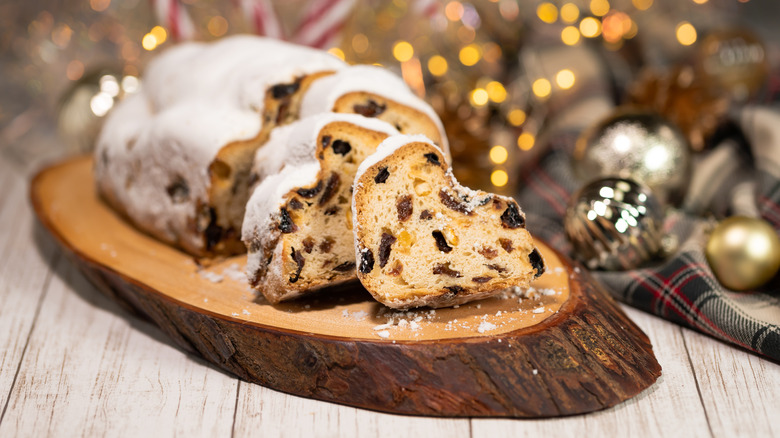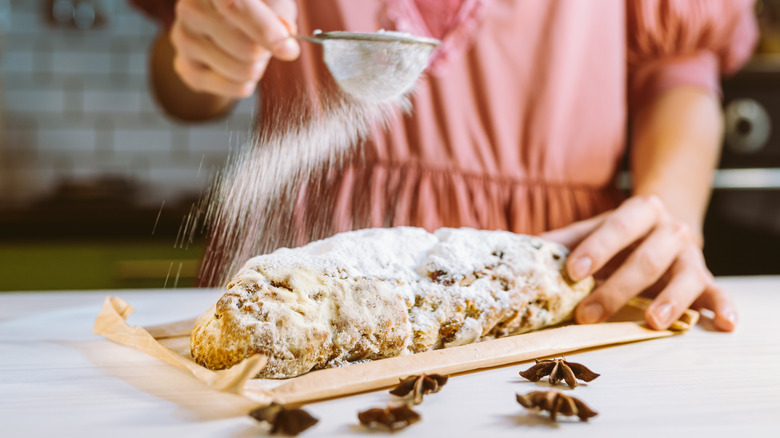The Fascinating History Of Traditional Christmas Stollen
Just like French bûche de noël or Italian panettone, stollen is one of those international Christmas cakes that are famous beyond their native country — in this case, Germany. Stuffed with aromatic spices and candied citrus peel and dusted with powdered sugar, it's a sweet treat synonymous with the festive season though it can be eaten at other times of year, too. Dating back to the 15th century, the fragrant cake-like bread is steeped in history — but it has not always been the decadent holiday favorite we recognize today.
Back in the 1400s in Dresden, the city from where it originates, stollen was a medieval fasting food. Since butter and milk were not permitted by the Catholic church, it originally contained only flour, yeast, and water. In 1491, Pope Innocent VIII overturned the butter ban following a written request from Prince Ernst and his brother, and stollen became much richer (and we'll assume more delicious). It has been part of Christmas celebrations since the early 1600s.
Today, Dresden Christstollen, as the sweet treat is called there, has a protected geographical indication (PGI). It is so revered in Dresden that there is an annual festival dedicated to the sweet pastry – Stollenfest – which includes the baking of a giant stollen that can serve 24,000 people. If you want to have a go at making your own for the holidays, although probably serving a more modest number, it's not especially complicated — but it does require time and patience.
Stollen takes time to make and improves with age
While some fruit-based bakes (such as this cranberry and carrot cake recipe) can be made in under an hour, stollen takes a long time to make. We're talking weeks, not hours. The reason it's such a long process is because the fruit and peels need to be soaked overnight, and also because once the cake has been baked, it should be wrapped and aged for two to three weeks so that the flavors can become more mellow and rounded. If you don't have the time (or patience), though, aging is not essential, and the stollen can be eaten right away.
According to the official Stollen Association, traditionally the pastry should be made with ingredients including dried fruit, butter, almonds, candied orange and lemon peel, flour, water, and yeast along with spices and spirits. While often whiskey is a game-changer for rehydrating dried fruit, you'll want to use dark rum or brandy for the stollen fruit — or try orange juice if you'd rather switch the booze for something non-alcoholic. The spices could include nutmeg, cardamon, mace, vanilla, or cinnamon according to personal preference.
Once you've made stollen, it will keep for up to two months in an airtight container, provided it is stored in a cool, dark place. Alternatively, you can freeze it for up to six months — just slice it first, and wrap each slice in plastic or wax wrap and foil to protect it from freezer burn.


